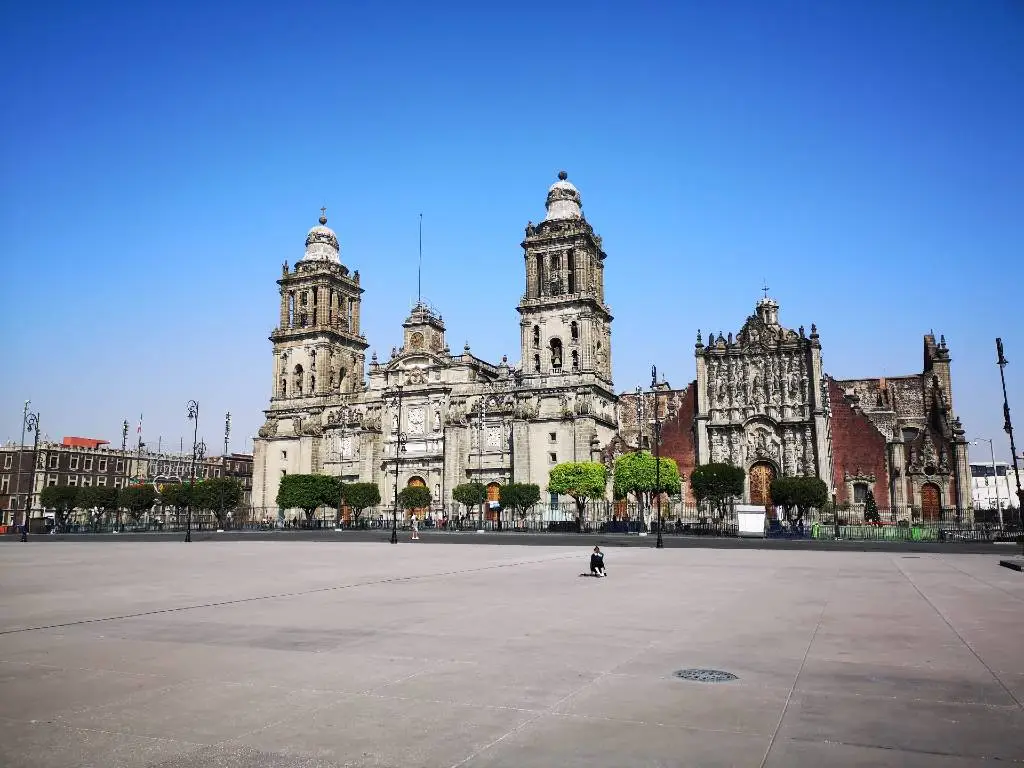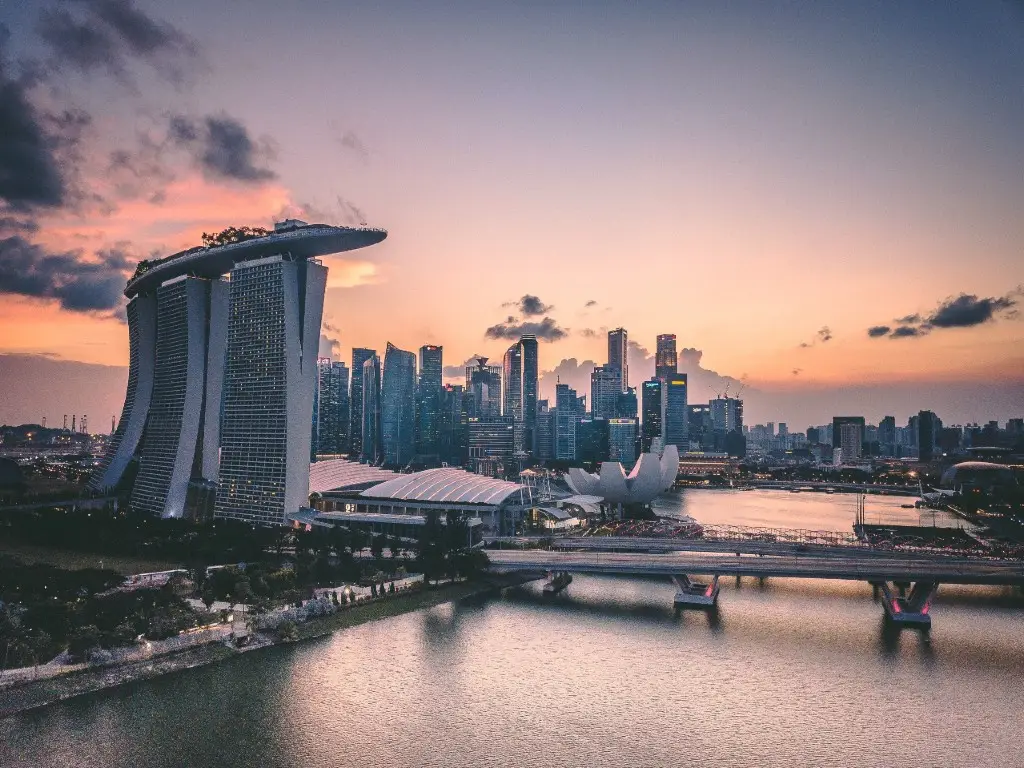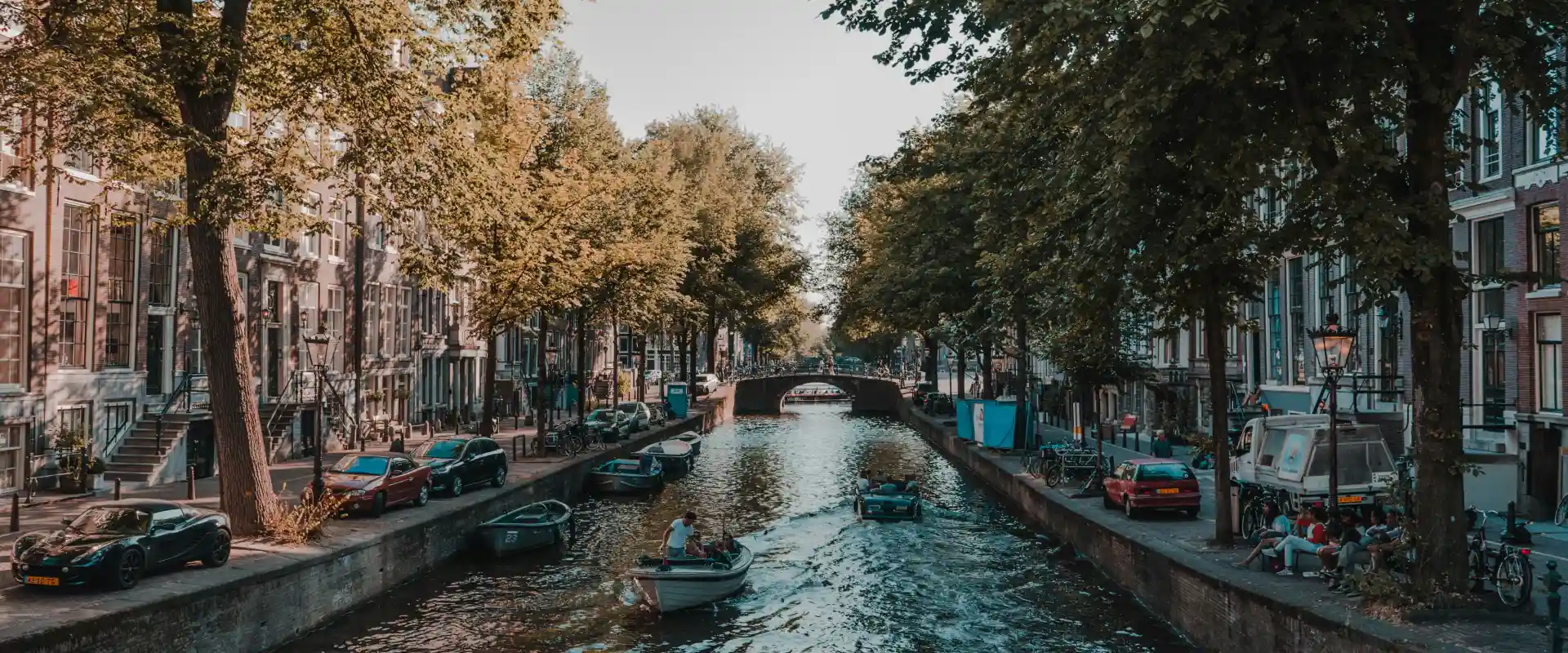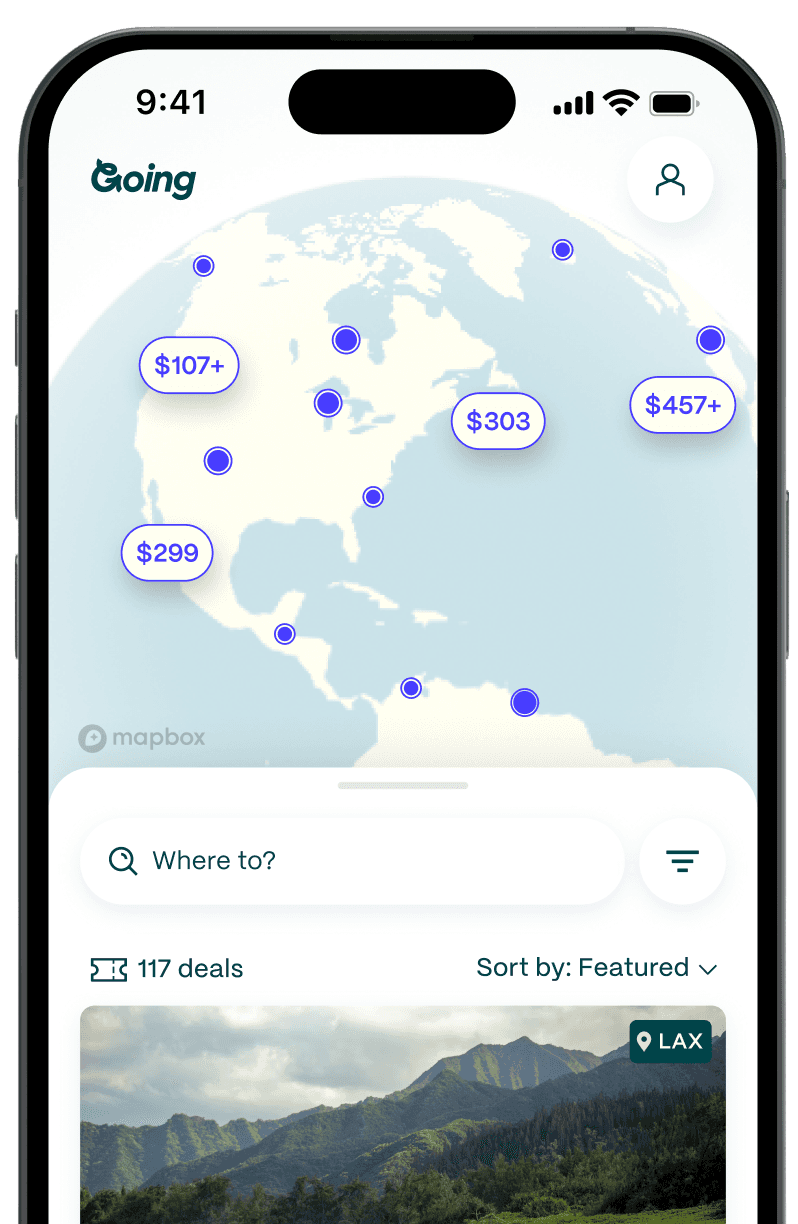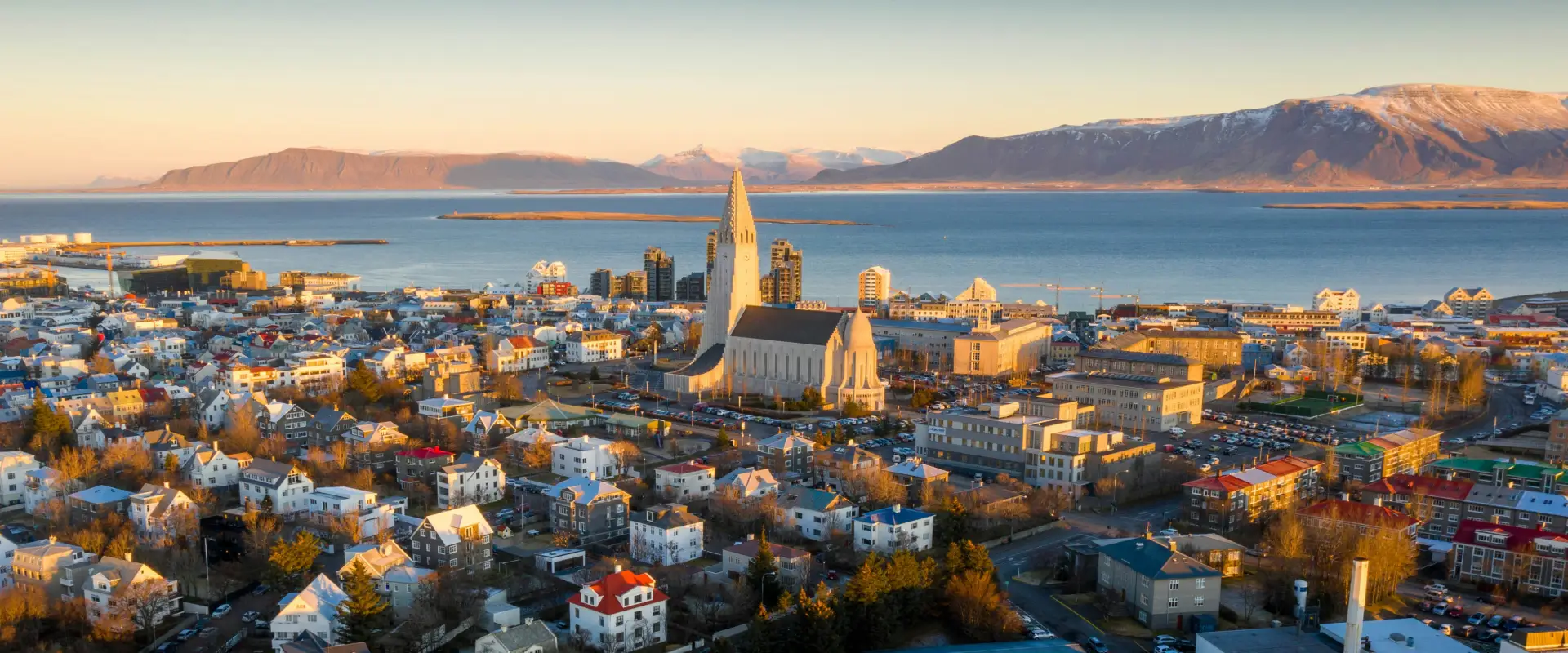
Layover in Reykjavik, Iceland: Guide to Experience the Best in Hours
Table of Contents
Key takeaways
- Iceland's location between North America and Europe makes it an ideal stopover for travelers, with Icelandair offering free layovers of up to seven days. It’s a great way to experience stunning landscapes like waterfalls, black sand beaches, and the Northern Lights.
- US passport holders can visit Iceland without a visa for up to 90 days. For layovers, a minimum of 3 hours is needed for international-to-domestic connections and 1 hour for international-to-international connections. To leave the airport and explore Reykjavik, 7–9 hours is recommended.
- From Keflavik airport, Reykjavik is about an hour’s drive away, with options like Flybus or taxis. For a short layover, visiting Reykjavik's landmarks or the nearby Blue Lagoon is ideal, while a longer layover allows time for exploring Iceland’s Golden Circle or the Reykjanes Peninsula.
- The best time to visit Iceland is during the summer months (June–August), though fall and spring offer a more peaceful experience. Iceland is known for being expensive, with high accommodation, food, and transport costs, but there are budget options like campervans for a more affordable experience.
- With Going membership plans, you can get real-time alerts as soon as prices drop for domestic and international flights, even ones that route through Iceland. That way, you know you're getting the some of the cheapest flights every time.
Whether as the backdrop of a movie or all over your Instagram feed, you’ve probably seen Iceland. Between the jaw-dropping waterfalls, magnificent black sand beaches, and charismatic horses and puffins, the island nation has captured the imagination of travelers to the point of becoming one of the most sought-after destinations on the planet.
Although it’s geographically isolated, Iceland’s position between North America and Europe makes it ideal for an extended layover when traveling from one continent to the other. Icelandair simplifies the process with their Stopover feature, which allows passengers to tack on a layover in Iceland lasting up to seven days at no additional cost.
Whether it’s the spectacle of the midnight sun or the dazzling northern lights calling to you, a stop in Reykjavik offers endless possibilities. From geothermal spas to vibrant cultural spots, there’s no shortage of Reykjavik layover ideas to make the most of your time. Here’s everything you need to know about taking a layover in Iceland.
VISA REQUIRED: No
MINIMUM CONNECTION TIME, INTERNATIONAL TO DOMESTIC: 3 hours
MINIMUM CONNECTION TIME, INTERNATIONAL TO INTERNATIONAL: 1 hour
MINIMUM CONNECTION TIME TO LEAVE THE AIRPORT: 5 hours
Visa info
As a nation under the Schengen Agreement, Iceland allows US passport holders to stay visa-free as tourists in the country for up to 90 days within a 180 day period. This means if you stay in Iceland for the allowed 90 days, you can’t wait a day and then come back: a further 90 days will need to pass before you can return without a visa.
Minimum layover times
To make an international-to-domestic connection: 3 hours
Although your international flight ticket says you’re flying into Reykjavik, the KEF airport code stands for Keflavik. This is the town where the international airport is located, and it’s about 45–60 minutes south of Reykjavik proper.
To make matters more complicated, domestic flights in Iceland operate from the Reykjavik airport, which is in the city proper. If you are due to catch a domestic flight after landing in Iceland, say to Isafjordur or Akureyri or Greenland, here is how much time you need to budget, and how to make it happen:
- 1 hour to deplane and go through immigration and customs
- 1 hour transit to Reykjavik airport, depending on traffic and weather
- 1 hour arrival prior to domestic departure
Flybus is going to be your best option for getting between airports. Taxis and private shuttles are also available but will cost significantly more. See more information at Air Iceland Connect.
To make an international to international connection: 1 hour
There is only one terminal at Keflavik, but there are several distinct gate zones. If Keflavik is your layover between North America and Europe, you will arrive in D Gate, go through passport control, and then depart from A or C Gates. You should allow for at least an hour to account for walking and waiting for passport control.
If you are going from North America to the UK or Ireland, you will arrive and depart from D Gate. Because you will not be proceeding to a Schengen area, going through passport control is not necessary. You should allot for some time to change planes, but not much is needed.
Want to score the best flight deals? Learn expert tips on how to find cheap flights and save big on your next trip.
To leave the airport and explore Reykjavik for part of the day: 7–9 hours
All it takes is a little bit of planning if you want to leave the airport and spend the day in Reykjavik during a layover. The international airport is about an hour’s drive south of the city, which can increase with traffic or bad weather, so you will need about 7–9 hours for a proper visit without risking a missed flight. If you want to explore Iceland without going all the way to Reykjavik, see below for other options.
- 1 hour to deplane and go through immigration and customs
- 1 hour transit to downtown, depending on traffic and weather
- 2–3 hours to explore
- 1 hour to return to airport
- 2–3 hours to go back through security, get to your gate, and board the plane. Airport queues can be quite lengthy, and therefore stressful, so be sure to give yourself adequate cushion time at this stage.
To leave the airport and explore a bit of Iceland nearby for part of the day: 6 hours
- 1 hour to deplane and go through immigration and customs, and rent a car (it’s best to do this in advance)
- 5 hours to explore the Reykjanes peninsula
The Reykjanes Peninsula is home to Keflavik and the airport, and there is a lot to explore here. As for what that exploration could include, here is a sample itinerary:
- Stop by Aurora Basecamp for a chance to experience the Northern Lights no matter what time of day or year. This interactive exhibit is the next best thing to spotting the aurora in the wild.
- Walk on Kleifarvatn, a black sand beach in the Seltún Geothermal Area.
- See other sights in the area, including the Reykjanes lighthouse, the Bridge Between Continents at Sandvík, and Brimketill, a natural pool at the ocean’s edge.
Getting from Iceland's Keflavik International Airport to Reykjavik
- AIRPORT TAXI: 45 minutes to 1 hour (depending on traffic and weather)
- SHUTTLE BUS: 45 minutes to 1 hour and 15 minutes (depending on traffic and weather)
Airport taxis are available outside the arrivals hall at the airport in Keflavik. They can be booked in person, and it's advised to ask about the price before you set off. Given the distance to Reykjavik, the cost can be upwards of $170 for one trip. Travelers opt for taxis when they want to avoid being among many people on the bus, or want a direct route to accommodations not served by the bus. There is no Uber or Lyft service in Iceland.
The Flybus is the most favored way to get from the airport to Reykjavik. It operates throughout the day and will wait for passengers disembarking delayed flights. It costs $27.51 for a ride to the bus terminal in Reykjavik, with an additional cost for accommodation-specific dropoff. Free wifi is available on the bus, too. Tickets can be booked on the Reykjavik Excursions website.
How to spend a short layover at the Iceland airport
The Keflavik airport is not designed for a long term stay, though there is free wifi. Once you have gone upstairs and passed through security, several restaurants and shops are available for browsing. The Blue Lagoon has a skincare store, and Rammagerðin is ideal for handicrafts and souvenirs. The airport can become easily crowded, making finding a place to sleep very difficult; there is no dedicated space to do so.
Timing is everything! Find out the best time to book a cheap flight and score the lowest fares.
How to spend a short layover outside the Iceland airport

Even a few hours in Reykjavik will be enough to become well-acquainted with the city. Here are a few suggestions for how to make the most of your time in Reykjavik:
- See the iconic Hallgrímskirkja, the lava column-inspired church that crowns the city’s skyline.
- Visit the Sun Voyager, a modern sculpture of a viking boat on Reykjavik’s waterfront.
- Witness the beguiling architecture of Harpa Concert Hall.
- Get a hot dog with everything on it at Bæjarins Beztu Pylsur.
- Pick out a traditional, handmade lopapeysa (wool sweater) from the Handknitting Association of Iceland. If they don’t have what you like, custom orders can be made and shipped to you later.
- Enjoy the many murals and instances of street art hidden in the city’s side streets.
- Stop by the lobby bar in the Reykjavik EDITION hotel for a drink made with Icelandic liquor.
- Relax at the Sky Lagoon, a geothermal addition to Reykjavik that expands upon the relaxing experience of the Blue Lagoon. Or head to the Reykjadular Valley to soak in a hot spring river valley.
How to visit the Blue Lagoon on a short layover in Iceland

Iceland’s famous Blue Lagoon is perfectly situated between Keflavik and Reykjavik, though if you’re pressed for time on a layover, it makes for an ideal sole stop. Here is what you need to know about visiting the Blue Lagoon:
- Book your ticket in advance. Whether you book the comfort (from $76), premium (from $98), or signature package (from $125), it’s important to do so before arrival.
- Grab a roundtrip bus ticket from the airport via Destination Blue Lagoon (also in advance). It can be booked along with the spa package of your choice.
- Luggage storage is available for a small fee.
- Leave your jewelry in the locker to avoid tarnishing from the minerals in the water.
How to spend an overnight layover in Iceland
Having an overnight layover in Iceland greatly increases what you can see, especially if you arrive early on the first day and leave in the afternoon on the next. With this much time, you can visit the Blue Lagoon before exploring Reykjavik and ultimately tour the Golden Circle. This is a series of Iceland’s most popular sights, including geysers, waterfalls, and Þingvellir National Park.
Staying in Reykjavik is a good way to balance adventures in nature during the day and access to restaurants and nightlife in the evening. However note that if it’s Northern Lights season, you are unlikely to see them from Reykjavik due to light pollution. Make up for this by eating well-crafted meals at Dill, Tides, or Grillmarkaðurinn, three of the city’s top restaurants. Reykjavik has plenty to offer when it come to drinking: Kaffibarinn for the hipsters, Pablo Discobar for the stylish crowd, and Kiki Queer Bar for LGBTQ+ travelers. Lebowski Bar is also very popular among American visitors.
The city is full of excellent hotels, including the Canopy by Hilton and the Reykjavik EDITION for travelers looking to relax in stylish comfort, KEX Hostel for the budget-conscious, and everything else in between.
If you only have one night to attempt a Northern Lights sighting, the best chance you have to do this is to stay outside the city at a hotel well-situated for the aurora. Rent a car and head to Hotel Rangá on Iceland’s southern coast, about an hour from Reykjavik and 2 hours from the airport. If the clouds part and conditions are favorable, the hotel staff will even wake you up to ensure you can check seeing the Northern Lights off your bucket list.
Need to Know
- ICELANDIC CURRENCY: Króna (ISK)
- LANGUAGE: Icelandic and English
- SAFETY: A+
- COST: $$$$
- BEST TIME TO GO: May–September
Currency in Iceland
Iceland uses the Icelandic Króna, and all prices that you encounter will be listed in the local currency (don’t be scared of all those zeros at the end). However, credit card use is ubiquitous, and it’s likely that you will not need to use cash or coins at any point during your trip. To search conversion rates, use ISK to distinguish from other Scandinavian forms of currency with names similar to króna.
Costs in Iceland
Travelers rarely complain about their trips to Iceland, but when they do, it’s about how expensive the country is. Expect to pay $100–$150/night for basic accommodations in Reykjavik, $20–$35 for a standard lunch, and $9 for a local beer. Alcohol is quite expensive overall in Iceland, as is much of the food, since they rely on a fair amount of importing. Fuel prices also, on average, higher than in the U.S. It’s recommended to purchase liquor in the duty-free shop at the airport on arrival, though this won’t help with the cost of drinks at a bar.
There are ways to explore Iceland on a budget, such as renting a camper van and cooking meals using locally-sourced ingredients, but it will still break down to a higher cost than doing an equivalent itinerary in the US.
Weather & Best Time to Go to Iceland

The running joke in Iceland is that if you don’t like the weather, just wait five minutes. This seems like an exaggeration but it’s genuinely true, although not necessarily the part about liking the weather after it’s changed. The point is, Iceland’s weather is notoriously volatile, unpredictable, and challenging for those inexperienced with extreme weather conditions. There are other seasonal factors to take into consideration when planning a trip to Iceland, including the amount of daylight and availability of activities, so read through what each season is known for. Just remember that Iceland’s weather is always ready to surprise you, no matter the time of year.
Stop searching, start saving! Learn how to set airfare price alerts and let the deals come to you.
Summer (June–August)
Summer is the most popular season of the year for tourism, when the weather is on its best behavior and the horizon is decorated with the Midnight Sun. June is when the puffins arrive, and also when Iceland celebrates its National Day. This is the best time to visit for access to as many places as possible, and the worst time to visit if you’re looking to avoid crowds.
Fall (September–November)
One of Iceland’s most underrated seasons, Fall offers a great balance between the access of summer and the singular charm of winter. The sun has not yet descended into near-permanent darkness, but the nighttime is still long enough for the Northern Lights to make an appearance. November is also when the music festival Iceland Airwaves takes place.
Winter (December–March)
No sunshine, lots of snow and Northern Lights. Iceland’s darkest months offer unique winter activities like skiing, ice cave exploration, and snowmobiling, plus a gossamer beauty that expands upon Iceland’s already stunning facade. It can be quite challenging for those unfamiliar with extreme winter conditions, which is why it’s recommended to hire local Icelandic guides to help you get around through operators like Friend in Iceland or Hidden Iceland.
Spring (April–May)
Another underrated season, spring offers a relatively uncrowded experience with a higher degree of access than winter. While it may be a little muddy from the snow melting, it’s overall an appealing time to explore the country.
Safety in Iceland

Iceland is one of the safest countries in the world for travelers to visit, especially for women, people of color, and LGBTQ+ folks. Crime, including towards tourists, is relatively rare, and there are no common scams to speak of. Iceland is ranked #1 on the Global Peace Index, with one of the world’s lowest crime rates. Even animals won’t bother you in Iceland—their only native mammal is the Arctic fox, and the puffins are harmless. They take physically safety seriously for citizens and tourists alike, offering resources like www.safetravel.is to assist everyone in dealing with sudden changes in the weather or unforeseen geological activities.
Transport in Iceland
Roadtripping around Iceland is the most common way to see the country, with enough rental cars and campervans to go around. There are public buses that go around the country, as well as domestic flights that can be booked from city to city. Hitchhiking is not unheard of, given Iceland’s friendly and hospitable personality, but it is becoming less common.
If you go the typical route and rent a car, Icelanders would appreciate taking care to follow the rules of the road, especially not stopping in the middle of it to take a picture. This particular behavior has caused an increasing number of accidents as tourism has grown more popular, so it’s on us to be better guests.
Food & Drink in Iceland

Iceland’s cuisine is not one to be missed. Forget about all the “weird” dishes you’ve heard about —if someone tries to feed you fermented shark, they are definitely screwing with you—and head to Reykjavik’s best restaurants to find that Icelandic food is really about local ingredients, heart meals, and delicious flavors.
- Bæjarins Beztu Pylsur is the home of Iceland’s famous hot dog.
- Svarta Kaffið only serves one thing: soup in a bread bowl. Choose between meat and vegetarian and enjoy this cozy meal.
- Tides is a restaurant housed inside the Reykjavik EDITION, a project from Iceland’s first Michelin-starred chef.
- Drink Appelsín, a local orange soda. And if it’s Christmastime, opt for Malt og Appelsín, a seasonal favorite.
- Grillmarkaðurinn, or Grill Market, is a mossy enclave serving up excellent steaks.
Language in Iceland
Icelandic is the official language of Iceland. English is spoken with fluency by a majority of the population, with the exception of some of its older citizens. Many signs will be listed in English alongside Icelandic, and in the more touristy areas, German, Chinese, and Spanish can be seen (usually warning people to stay away from dangerous situations). Learning Icelandic is not necessary to travel easily throughout the country, though attempts are always appreciated.
Don’t miss
The Blue Lagoon is on everyone’s Iceland to-do list for good reason: It captures Iceland’s unique, ethereal beauty, while offering a rejuvenating experience that miraculously cures jetlag. The photos visitors take here become memories they treasure forever, and can be easily scheduled coming from or to the airport, or as a single activity during a short layover. Plus, you can’t go to Iceland without immersing yourself in a hot spring!
Don’t bother
Eating whale and/or puffin is not worth it. The availability of both is diminishing in restaurants—Iceland is even set to quit the whale hunting industry entirely in the next few years. Both have been on menus primarily for tourists, not as a reflection of the culture, and is an experience that takes away from visiting Iceland more than it enhances it.
Read more about Iceland, see Going's deals on flights to Iceland, and join today to get cheap flights from all over the world delivered right to your inbox.
Frequently asked questions
Can you leave Iceland airport during a layover?
Do I need a visa if I have a layover in Iceland?
Do I have to go through customs in Iceland for a layover?
Does Iceland have a layover program?
Is the Iceland stopover worth it?
Last updated May 13, 2025


